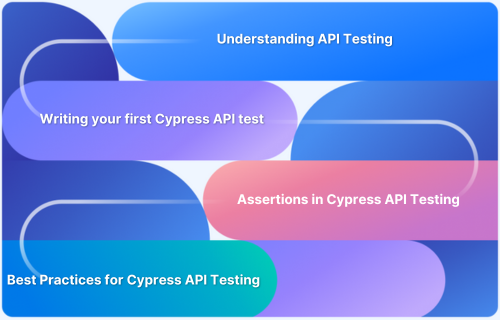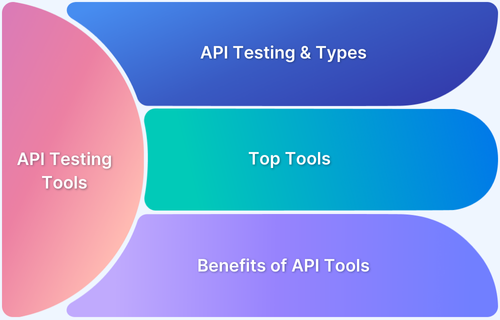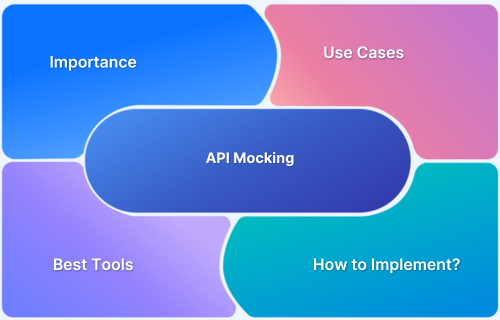As GraphQL adoption grows, so does the complexity of managing queries across large applications. Repeated field selections, inconsistent query structures, and growing schemas can quickly lead to cluttered and hard-to-maintain code. GraphQL Fragments provide an elegant solution by making queries more modular, reusable, and easier to debug.
Overview
A GraphQL Fragment is a reusable selection of fields that can be shared across multiple queries, mutations, or subscriptions to avoid duplication and keep queries clean.
Benefits of Using GraphQL Fragments
- Reusability: Share common field selections across different queries and components.
- Readability: Keep queries concise and easier to understand.
- Maintainability: Update fields in one place instead of multiple queries.
- Consistency: Ensure uniform data structures across the application.
- Better Caching: Improve client-side caching with repeated fragment usage.
This article explores how fragments work, when to use them, their benefits and pitfalls, and best practices for applying them effectively, along with tools like Requestly to simplify debugging.
Understanding GraphQL Fragments
As GraphQL applications grow, queries often become repetitive, with the same set of fields requested across multiple components. This repetition not only clutters queries but also increases the risk of inconsistency. Fragments solve this by allowing developers to define a reusable piece of a query that can be shared across different operations.
A fragment acts like a template: once defined, it can be spread into multiple queries, mutations, or subscriptions. This keeps queries modular, improves readability, and ensures data consistency across the application.
Fragments are especially powerful in large-scale projects where multiple teams work with overlapping schemas, making them a cornerstone of clean and maintainable GraphQL code.
Defining and using Fragments
Fragments in GraphQL are defined once and then reused across multiple queries, mutations, or subscriptions. The basic syntax uses the fragment keyword followed by a name, the target type, and the fields to include.
Example: Defining a Fragment
fragment UserFields on User {
id
name
email
}Example: Using a Fragment in a Query
query GetUsers {
users {
...UserFields
}
}Fragments can also be nested within other fragments or used inline to handle unions and interfaces. This flexibility allows developers to avoid repetitive field selections while keeping queries modular and readable.
When to use a Fragment
Fragments are most useful in scenarios where queries become repetitive or complex. Common use cases include:
- Shared Fields Across Queries: When multiple queries or mutations request the same fields, fragments ensure consistency.
- Component-Based Development: In UI frameworks like React, fragments let each component define the data it needs while reusing shared selections.
- Deeply Nested Objects: When fetching related entities with many fields, fragments keep queries modular and easier to manage.
- Team Collaboration: In large projects, fragments standardize data selection across teams, reducing duplication and errors.
By using fragments in these situations, developers keep queries clean, maintainable, and aligned with the structure of their applications.
Read More: React Testing: How to test React components?
Benefits of using GraphQL Fragments
Using fragments in GraphQL queries provides several advantages that make applications easier to maintain and scale:
- Reusability: Define common field selections once and reuse them across multiple queries, mutations, or subscriptions.
- Readability: Keep queries concise and organized, making them easier for developers to understand.
- Maintainability: Update fields in one place rather than editing several queries, reducing the risk of errors.
- Consistency: Ensure uniform data structures across different components and teams.
- Better Caching: Improve client-side caching in frameworks like Apollo, where shared fragments help normalize data efficiently.
By leveraging these benefits, teams can streamline their development workflow and reduce redundancy in complex GraphQL applications.
When not to use Fragments
Although GraphQL fragments help reduce duplication and improve maintainability, they can also introduce unnecessary complexity if used in the wrong context. Knowing when not to use them is just as important as knowing when to rely on them:
- Simple Queries: For queries that fetch only a handful of fields, adding fragments can make the code more verbose instead of cleaner.
- Single-Use Fields: If a field selection is used only once in the entire application, wrapping it in a fragment provides little to no benefit.
- Rapidly Changing Schemas: In projects where schema fields evolve quickly, fragments may require constant updates, creating additional maintenance overhead.
- Over-Fragmentation: Splitting queries into too many fragments can scatter logic across multiple files, making queries harder to trace and debug.
In these cases, it’s often better to write the query inline for clarity. Fragments shine most when there’s repetition and reusability; otherwise, they can weigh down your codebase.
Read More: Top 10 Python REST API Frameworks in 2024
Challenges and Risks
While GraphQL fragments improve code quality and maintainability, they also bring certain challenges that developers need to watch out for:
- Overuse of Fragments: Breaking queries into too many small fragments can lead to fragmentation sprawl, making queries harder to follow.
- Hidden Complexity: Spreading multiple fragments across queries can obscure which fields are ultimately being fetched, reducing readability.
- Maintenance Overhead: In rapidly evolving schemas, fragments may need frequent updates, creating extra work to keep them consistent.
- Dependency Management: When fragments are shared across teams or components, changes to one fragment can unintentionally break others.
- Performance Concerns: Large query documents with deeply nested fragments can increase parsing time and affect client performance.
By being mindful of these risks, teams can strike the right balance, using fragments where they add real value while avoiding patterns that complicate the codebase.
Best Practices & Guidelines
Using fragments effectively requires a balance between reusability and simplicity. The following guidelines can help teams get the most value out of them:
- Define Clear Boundaries: Create fragments around logical entities (e.g., UserFields, ProductDetails) rather than arbitrary field groupings.
- Use Consistent Naming: Adopt clear, descriptive names that reflect the type or purpose of the fragment to avoid confusion.
- Avoid Over-Fragmentation: Don’t split queries into unnecessary fragments, keep them focused and meaningful.
- Organize Fragments Centrally: Store commonly used fragments in shared modules or folders so teams can reuse them consistently.
- Pair with Type-Safe Tools: Use code generators (like GraphQL Codegen) to ensure fragments stay in sync with the schema.
- Refactor with Care: When evolving fragments, apply deprecation or incremental updates to avoid breaking dependent queries.
By following these practices, teams can keep queries clean, reusable, and aligned with application growth, without falling into the trap of unnecessary complexity.
Debug GraphQL Fragments with Requestly HTTP Interceptor
Fragments can make real traffic harder to inspect because the client ships a query document with fragment spreads and variables. Requestly HTTP Interceptor lets you see and control that traffic in-flight so you can validate fragment behavior without touching backend code.
- Capture & inspect GraphQL POSTs: Route app traffic through Requestly to view the full request body (operation text + fragments), headers, and responses for each call.
- Modify request bodies: Rewrite the GraphQL document to A/B test fragment usage (e.g., remove a fragment spread, swap a nested fragment, change operationName or variables) and observe UI/cache effects.
- Mock fragment fields in responses: Inject stub data, tweak status codes, or remove specific fields that a fragment selects to test error boundaries, loaders, and null-handling—no backend deploys needed.
- Adjust headers for scenarios: Add/remove auth or feature flag headers to see how fragments render under different user states or experiments.
- Team-friendly debugging: Use rules to reproduce tricky bugs, share them with QA, and replay exactly the same network conditions during review.
Conclusion
GraphQL fragments are a simple yet powerful feature that bring structure, consistency, and maintainability to complex queries. By reusing field selections across operations and components, they reduce duplication and keep applications easier to evolve as schemas grow. Still, fragments are not a silver bullet, overuse, hidden complexity, and maintenance overhead can work against their intended benefits.
Following best practices in naming, organization, and testing ensures fragments remain an asset rather than a burden. And with tools like Requestly HTTP Interceptor, developers can debug and validate fragment behavior in real time, making the development cycle faster and more reliable. Used thoughtfully, fragments help teams strike the right balance between flexibility and clarity in modern GraphQL applications.







